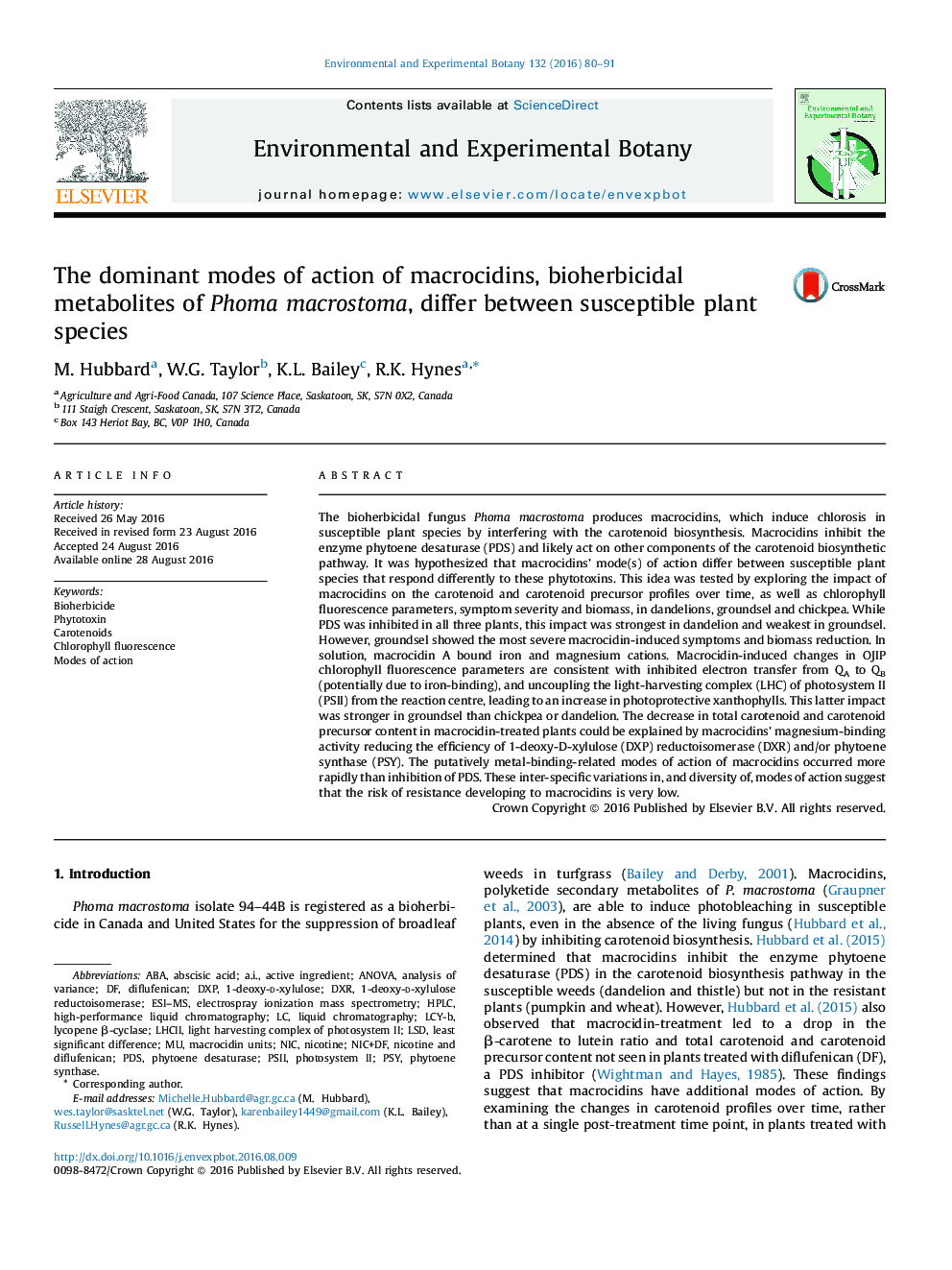| Article ID | Journal | Published Year | Pages | File Type |
|---|---|---|---|---|
| 4554047 | Environmental and Experimental Botany | 2016 | 12 Pages |
•Macrocidins have multiple modes of action.•Relative importance of macrocidins modes of action varies among susceptible plants.•Macrocidins bind iron, potentially inhibiting photosynthetic electron transport.•Macrocidins bind magnesium, potentially inhibiting synthesis of carotenoid precursors.•Macrocidins inhibit phytoene desaturase (PDS).
The bioherbicidal fungus Phoma macrostoma produces macrocidins, which induce chlorosis in susceptible plant species by interfering with the carotenoid biosynthesis. Macrocidins inhibit the enzyme phytoene desaturase (PDS) and likely act on other components of the carotenoid biosynthetic pathway. It was hypothesized that macrocidins’ mode(s) of action differ between susceptible plant species that respond differently to these phytotoxins. This idea was tested by exploring the impact of macrocidins on the carotenoid and carotenoid precursor profiles over time, as well as chlorophyll fluorescence parameters, symptom severity and biomass, in dandelions, groundsel and chickpea. While PDS was inhibited in all three plants, this impact was strongest in dandelion and weakest in groundsel. However, groundsel showed the most severe macrocidin-induced symptoms and biomass reduction. In solution, macrocidin A bound iron and magnesium cations. Macrocidin‐induced changes in OJIP chlorophyll fluorescence parameters are consistent with inhibited electron transfer from QA to QB (potentially due to iron-binding), and uncoupling the light-harvesting complex (LHC) of photosystem II (PSII) from the reaction centre, leading to an increase in photoprotective xanthophylls. This latter impact was stronger in groundsel than chickpea or dandelion. The decrease in total carotenoid and carotenoid precursor content in macrocidin-treated plants could be explained by macrocidins’ magnesium-binding activity reducing the efficiency of 1‐deoxy‐D‐xylulose (DXP) reductoisomerase (DXR) and/or phytoene synthase (PSY). The putatively metal‐binding‐related modes of action of macrocidins occurred more rapidly than inhibition of PDS. These inter‐specific variations in, and diversity of, modes of action suggest that the risk of resistance developing to macrocidins is very low.
Graphical abstractFigure optionsDownload full-size imageDownload as PowerPoint slide
